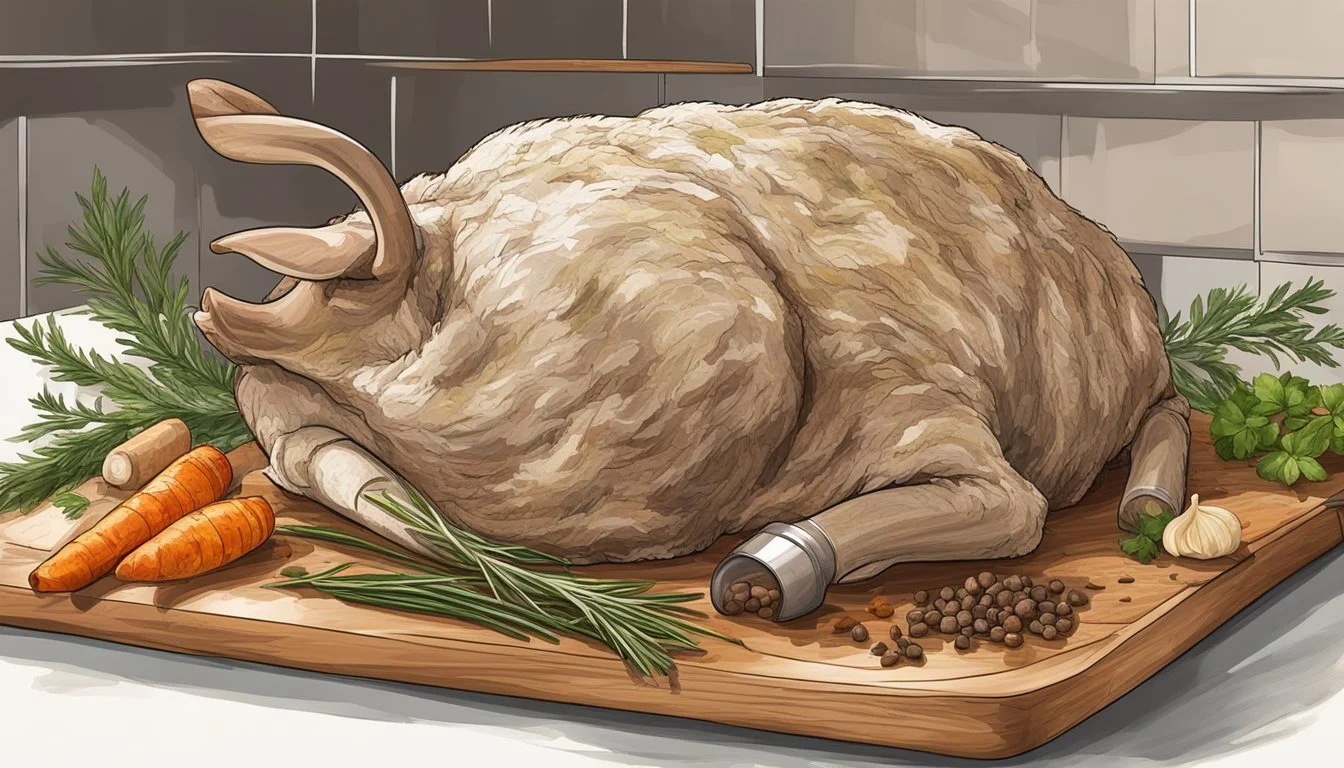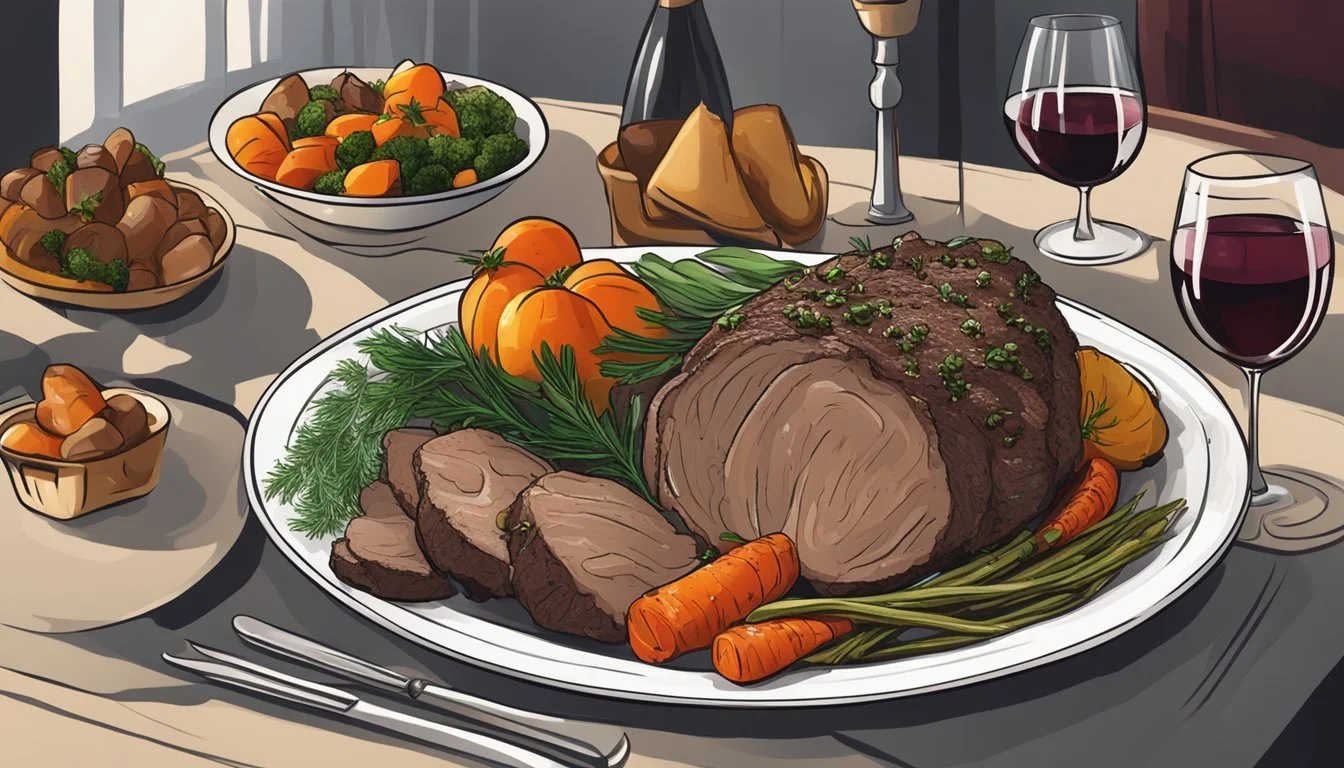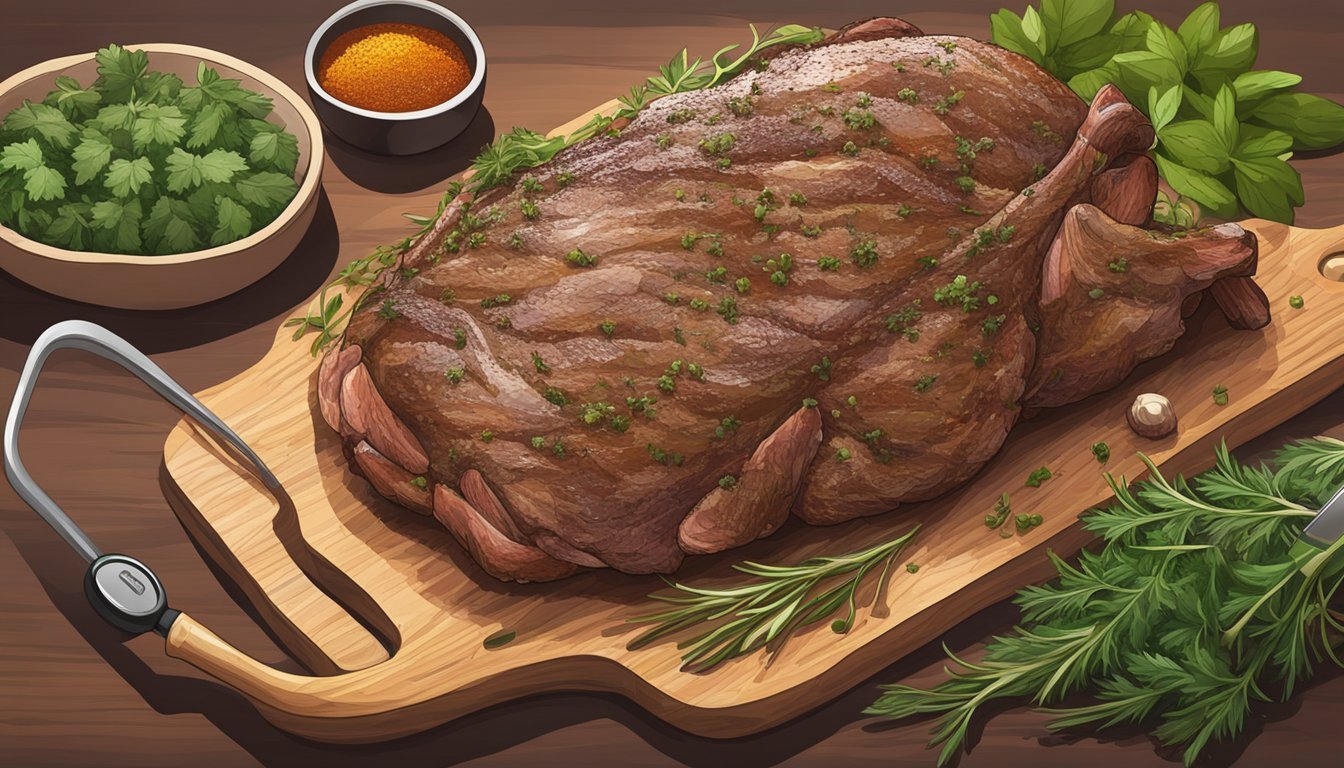Best Way to Reheat Lamb Leg Roast
Ensuring Tenderness and Flavor Retention
Reheating lamb leg roast is all about preserving the succulence and rich flavors developed during the initial cooking process. A lamb leg roast, tender and full of flavor when first prepared, can become dry and less appealing if not reheated properly. Understanding the right techniques to maintain the meat's moisture and tenderness is crucial for anyone looking to enjoy leftovers that are just as appetizing as when the roast first came out of the oven.
One must consider factors such as temperature, method, and timing to achieve the best results. Lamb, being a more delicate meat, requires gentle reheating to protect its delicate textures and flavors. Oven reheating is favored for its ability to evenly warm the meat without sapping it of moisture. The usage of added fluids like stock or its original juices can further ensure that the roast remains moist and flavorful through the reheating process.
Understanding Lamb Roast Reheating Fundamentals
Proper reheating preserves the lamb leg roast's tenderness and flavor. Mastery of temperature settings and reheating methods is crucial.
Importance of Reheating Temperature
The temperature at which one reheats a lamb roast is pivotal. It should be hot enough to warm the meat thoroughly but not so hot as to cook it further, which might lead to dryness. Oven reheating is generally done at low temperatures, ideally between 325°F (163°C) and 350°F (175°C). This ensures even heating while maintaining the meat's juiciness.
Reheating Methods Overview
There are a variety of methods available for reheating lamb:
Oven: Best for even heating and retaining moisture, it requires preheating and typically covers the lamb with foil to prevent drying.
Microwave: Quick and convenient, this method suits small portions. It involves heating in short intervals, typically 30-second bursts, covered with a damp towel to maintain moisture.
Air Fryer: Efficient for a crispy exterior, reheating in an air fryer should be done at a lower setting to warm without overcooking.
Skillet: Ideal for achieving a seared surface. One should use moderate heat and a bit of oil or butter to reintroduce moisture.
Sous Vide: Ensures precise temperature control and can reheat without sacrificing the roast's texture, but it requires vacuum-sealing the meat.
Stove: Works well for reheating sliced lamb in a pan over low heat, often with the addition of stock to keep the meat moist.
Steamer: A less common method, steaming can reheat slices of lamb slowly, locking in moisture without any direct heat contact.
Preparation Steps Before Reheating
Properly preparing your lamb leg roast before reheating is crucial to ensure tenderness and flavor. The steps below outline how to bring the meat to room temperature for even heating, preheat your oven or other appliance, and select the most suitable container for reheating.
Bringing Lamb to Room Temperature
One should remove the lamb from the refrigerator and let it sit out until it reaches room temperature. This usually takes about 30 minutes depending on the room's warmth. Starting at room temperature prevents the meat from reheating unevenly and promotes a better texture upon serving.
Preheat Your Tool of Choice
Oven: Preheat the oven to 325°F (163°C) for a gentle warming process.
Air Fryer: If using, preheat to 300°F (150°C).
Choosing the right temperature is key to avoid drying out the meat during reheating.
Choosing the Right Reheating Container
Selecting an appropriate container is essential for retaining moisture:
Oven-safe dish: Ideal for the oven, especially one with a lid.
Casserole dish: If the dish doesn't have a lid, one can use aluminum foil to cover the lamb. This prevents moisture loss and evenly distributes heat.
Aluminum foil: Wrap the lamb loosely in foil if reheating by other methods to keep it juicy.
One should always ensure that the lamb is covered either with a lid or foil to trap steam, which helps maintain the lamb's succulence.
Reheating Techniques for Maximum Tenderness
When reheating a lamb leg roast, maintaining its tenderness hinges on controlled heat application and moisture retention. The following methods provide focused strategies to ensure the meat remains juicy and tender for a satisfying meal.
Oven Reheating Method
To gently warm the lamb while preserving its succulence, one should preheat their oven to 325°F. Placing the leg on a wire rack, loosely covering it with foil, and adding a drizzle of stock or cooking juices prepares the lamb for an even reheat. Heat should be monitored to avoid overcooking, aiming for an internal temperature of 165°F for safety without compromising moisture.
Sous Vide Reheating Method
For utmost precision, a sous vide machine offers unparalleled control over temperature, ensuring that the lamb leg reheats thoroughly without exceeding its ideal serving temperature. The meat should be sealed in a vacuum bag along with a bit of broth or juices. Submerging it in a water bath set to 140°F ensures even heating and tenderness.
Moist Heat Reheating Method
Employing a moist heat method involves simmering the leg gently in a liquid to reintroduce moisture and warmth. The lamb should be placed in a pot with liquid such as broth at a low temperature to avoid drying out, covering the pot for an even and moist heat distribution.
Dry Heat Reheating Method
For those who prefer a drier exterior with tender meat inside, the dry heat method involves reheating in an oven without added liquid but still carefully controlling temperature. Before reheating, letting the lamb come to room temperature can shorten oven time and enhance even warming. The use of a paper towel draped over the meat can help protect the surface from drying while absorbing excess moisture.
Avoiding Common Reheating Pitfalls
Reheating lamb leg roast can lead to overcooking, loss of juiciness, and a dry, disappointing meal if not done correctly. To ensure tenderness and flavor, one must approach reheating with care by following these specific practices.
Preventing Overcooking
Low and Slow: Reheat at a low temperature, preferably 325°F (163°C), to maintain the internal texture of the meat.
Timely Check: Start checking the meat 10 minutes before the suggested reheating time to avoid overcooking.
Managing Juiciness and Drying Out
Retain Moisture: Drizzle the lamb with stock or its own juices before covering it loosely with foil to trap moisture.
Cover Properly: Ensure the foil is tented over the lamb, not sealed tightly, to prevent steaming and overcooking.
Checking Doneness with a Meat Thermometer
Ideal Temperature: Use a meat thermometer to check for the desired internal temperature—135°F for medium-rare, 150°F for medium, and 160°F for well-done.
Monitor: Insert the thermometer into the thickest part of the roast, avoiding the bone, for an accurate reading.
By adhering to these methods, one can successfully reheat a lamb leg roast, avoiding the common pitfalls that lead to an overcooked and dry meal.
Enhancing Flavor While Reheating Lamb
When reheating a lamb leg roast, she can employ a few key techniques to enhance its flavor and ensure it remains tender and juicy.
Utilizing Cooking Juices and Gravy
The intelligent use of cooking juices or gravy can make a significant difference in the flavor of reheated lamb. She should drizzle the meat with the liquid it was originally cooked in, as this will help maintain the moisture and enrich the overall taste. If she has no leftover juices or gravy, a good-quality stock can be a suitable substitute to keep the lamb succulent.
Adding Fresh Herbs and Spices
Incorporating fresh herbs and spices can elevate the reheated lamb to new heights of flavor. She should consider adding rosemary or thyme for their aromatic qualities, which complement lamb exceptionally well. Garlic, onion, or carrot can be introduced to the reheating process by placing them around the meat. Their flavors will gently infuse with the lamb, enhancing the dish without overpowering it.
Searing for a Flavorful Finish
After the lamb has been heated through, she can opt to sear the meat briefly in a hot pan. This method creates a desirable crust, adding a rich, caramelized texture that can be mouthwateringly good. However, she should be careful not to overcook the lamb during this stage; a quick sear is sufficient to impart that extra burst of flavor.
Serving and Pairing Reheated Lamb Roast
When a lamb roast is properly reheated, its tenderness and flavor are preserved, enhancing the dining experience. The key to a delightful meal lies in allowing a resting period post-reheating, choosing the right accompaniments, and being creative with leftovers.
Resting Period After Reheating
After the lamb leg roast is reheated to the desired internal temperature, it is crucial to let it rest before serving. A ten-minute resting period allows juices to redistribute for maximum tenderness.
Recommended Accompaniments
The right side dishes elevate the lamb's flavor and should complement its richness without overshadowing it. Classic pairings include:
Mashed potatoes: With a creamy texture, they act as a perfect base.
Roasted vegetables: Carrots, parsnips, and onions bring a slight sweetness.
Salad: A fresh, zesty salad cuts through the richness of the lamb.
Mint sauce: This bold, herby condiment is traditional and enlivens the lamb's flavor.
Creatively Repurposing Leftovers
Leftover lamb offers a chance to repurpose the meat into new, exciting dishes. For something different, one might consider:
Lamb curry: The leftover meat can be cooked into a spiced curry sauce.
Lamb sandwiches: Slices of the lamb, accompanied by mint sauce and fresh greens, can be used for gourmet sandwiches.
Storage Tips Post Reheating
Proper storage after reheating a lamb leg roast is crucial to maintain its tenderness and flavor. Adhering to refrigeration guidelines helps to keep the meat safe and preserves its quality.
Proper Cooling and Refrigeration
After enjoying a reheated lamb leg roast, one should cool the meat to room temperature before refrigeration. It should not sit out for more than two hours to avoid bacterial growth. Once cooled, place the lamb in an airtight container and refrigerate. The refrigerator's temperature should be set below 40°F to ensure the meat remains safe for consumption and its texture stays as fresh as possible.
Freezer Storage for Reheated Lamb
For longer storage, reheated lamb leg roast can be kept in the freezer. It is recommended to wrap the meat tightly in aluminum foil or freezer wrap, or to place it in a heavy-duty freezer bag to prevent freezer burn and preserve texture. Properly stored, the lamb can last for up to three months without a significant loss of freshness.
Thaw and Reheat: Best Practices
When one is ready to enjoy the frozen lamb again, thawing in the refrigerator is the recommended approach. This slow method ensures gentle thawing, helping to maintain the meat's quality. To thaw and reheat roast lamb, one should allow approximately 24 hours for every five pounds of meat in the refrigerator. Once thawed, reheating should be done at a low temperature, such as 325°F, to retain the lamb's tenderness and moisture.
Sustainable Practices for Lamb Reheating
Adopting sustainable practices during the reheating of a lamb leg roast is not only beneficial for the environment but can also enhance the quality and maintain the tender texture of the meat. These methods focus on energy efficiency and waste reduction while ensuring the reheated lamb shank retains its Mediterranean-inspired flavors and valuable iron content.
Conserving Energy During Reheating
Oven Reheating: Preheat the oven to a moderate temperature of no more than 325°F (163°C) before placing the lamb inside. This helps to ensure an even distribution of heat without the need for higher energy consumption.
Microwave Use: When using a microwave, it is more energy-efficient to reheat lamb in short intervals, checking often to prevent overcooking.
Appliance Maintenance: Regularly maintaining kitchen appliances, such as the oven and microwave, can enhance their efficiency and reduce energy use during reheating.
Minimizing Waste and Maximizing Usage
Portioning: Only reheat the amount of lamb needed, thereby minimizing energy use and avoiding unnecessary waste.
Creative Recooking: Transform leftovers into new dishes, such as stir-fries or salads, using all parts of the reheated lamb to make the most of the entire cut.
Storage: Properly store leftovers in airtight containers to prolong shelf life and maintain quality, which reduces the frequency of reheating and thus conserves energy.
By applying these practices, one can ensure that the reheated lamb not only tastes great, with a focus on retaining its tender texture, but also aligns with a commitment to sustainability.






